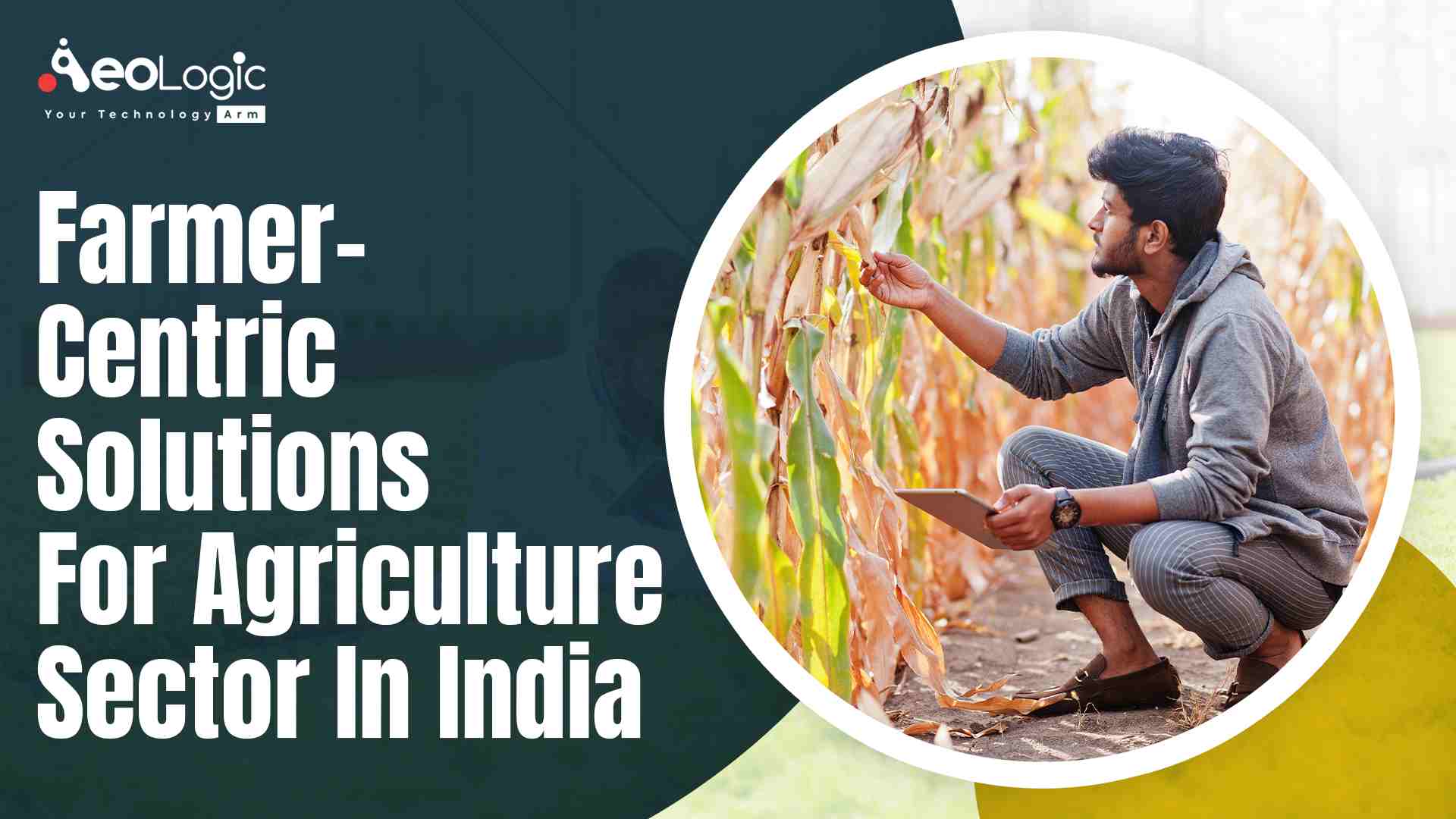The already huge and increasingly growing population of India is slated to become the world’s largest in the not-so-distant future. This population increase will present an outcome in huge demand for food. Given the dwindling acreages in the agriculture industry, this demand can only be increased through increased agricultural productivity or by increasing food imports. Therefore, we will discuss the farmer centric solutions for the agriculture sector in India.
India is a largely agrarian country with a large agricultural sector. Despite the share of agriculture in India’s GDP dwindling to roughly 15 percent, almost half of India’s population is employed in the agricultural sector. Since India is home to the second largest area of cultivable land in the world, it is also a main producer of a large number of agricultural products. Furthermore, India is the world’s largest producer of milk and a chief producer of pulses.
Also read: Role of Big Data in the Agriculture Industry
While the development of agricultural production has been robust over the years and has been able to meet the requirements of the growing population. However, India still has many concerns. Though India has accomplished self-sufficiency in grain production, it still has a large number of hungry and undernourished people. Before discussing the farmer centric solutions for the agriculture sector, let’s understand the challenges faced by the people associated with the agricultural industry.
CHALLENGES FACING THE AGRICULTURE SECTOR
Increasing agricultural yield per unit of land: With the limited availability of cultivable land and water resources calls for increased productivity per unit of land. The demand is urgent to increase yields, diversify to value-added crops; and decrease wastages, costs, and pilferage.
Poverty alleviation: Tackling rural poverty is a solution to make agriculture as well as non-farm employment accessible to rural people. And thereby decrease the dependence and overemployment in the industry.
Importance of aligning agriculture to food security demands: The Green Revolution and agricultural intensification led to reducing food prices, self-sufficiency in food-grains, and reduction in rural poverty. Nonetheless, the pace of agricultural development has slowed down significantly, and yields have plateaued. This leaves the sector vulnerable to external shocks and needs a concerted effort on all fronts. In order to implement methods to increase yield and achieve growth.
The need of the hour is to focus on program and policy-based actions that will be creating more productive, diversified, and competitive agriculture industry.
FARMER CENTRIC SOLUTIONS FOR AGRICULTURE SECTOR
Adopting New Technologies:
This depends on different factors such as geographical conditions, socioeconomic conditions, crop variety, irrigation facilities, etc. The role of farmer centric solutions for the agriculture sector can have various applications by way of using modern machines, enhanced seed varieties, application of pesticides and fertilizer, genetic engineering, etc. This will produce the result in higher productivity by preventing soil degradation, utilizing water efficiently, and mitigating the use of chemicals. These factors will make a direct benefit in improved quality, quantity, and reduction in cost.
Improving Soil Quality:
With the undiscriminating implementation of pesticides, fertilizers, and herbicides, this endemic problem plagues agriculture. The aim is to improve the production capability of soil with a higher focus on its physics and microbiology. It will involve the designing of chemical interventions (macro and micronutrients).
Irrigation Augmentation and Management:
The agriculture industry is the largest consumer of water in India. However limited water availability drives toward increasing competition between domestic use, industry, and agriculture. An immediate requirement is for planning and managing water in river basins for achieving a synergy in consumption on a multi-sectoral basis. This calls for boosting supply through rainwater harvesting, renovation of existing wells and ponds, and recharging aquifers. Furthermore, farmer centric solutions for the agriculture sectors also involves demand management. It should get priority through enhanced irrigation practices, including drip and sprinkler irrigation. This will need a water literacy movement and regulation for the application of groundwater. In order to get a conjunctive use of river, ground, rain, sea, and treated sewage water.
Agri-Credit and Crop Insurance:
Reforming in this sector is key to improving small farm productivity. Affordable and easy credit must be made available through official channels for farmers that are typically depending on private moneylenders. On the other hand, risk mitigation by way of crop insurance needs immediate reform. The speed and the approach of this process need policymakers for devising innovative solutions that established the financial system in equilibrium with farmers’ needs.

Efficient Markets:
The role of opportunities for assured and remunerative sales of crops will eventually determine the sustainability and economic well-being of the farming sector. Market reform is a corollary of demand and supply and must be associated with production planning and not merely with government-led support decisions. The connection between consumption and commerce chains is the answer to the long-term survival and growth of the farming community.
Also read: How AI is Transforming the Agriculture Industry
Final Thoughts
Boosting agricultural development in India requires major reform and a strengthening of India’s agricultural research and extension systems. A diverse and large country such as India has huge variations in agro-climatic and economic conditions. A single strategy cannot be adopted across geographies to achieve agri-development. Which requires a major thrust in reform of agricultural research and extension. These services are key in carrying the government vision for boosting agricultural development. Diversification of livelihoods through allied sectors, such as animal husbandry, forestry, and fisheries, will help build resilience and lead to a productive tomorrow.
Contact us to know more!
FAQs
Which technology is most effective for farmers?
Higher yields, reduced labor time, and the efficient utilization of resources is driving the large-scale adoption of the technology. Farmers now implement automated harvesters, autonomous tractors, drones, seeding, and weeding to change how they cultivate their crops.
What are the encounters faced by farmers today?
Poor infrastructure, average farm size, low use of farm technologies and best farming techniques, and decrease in soil fertility due to over-fertilization and sustained pesticide utilization. These are leading contributors to reduced agricultural productivity.









